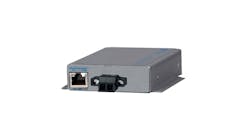In a presentation at the SPS Nürnberg 2023 conference last November, members of the NAMUR APL Task Force and ZVEI APL Task Force toted up many of the advantages of Ethernet-APL and possible use cases for potential users, including:
- Consistent infrastructure that reduces costs thanks to larger markets and more available spare parts, and enables transparency among Ethernet protocols, such as Profinet, EtherNet/IP and OPC UA, and between different physical layers.
- Consistent protocol for connecting device types, such as sensors, actuators, motor control, frequency inverters and process analyzers, and allowing use of proven protocols from other areas as advocated by the NAMUR NE 168 specification, “Requirements of an Ethernet-based communication system for the field device level.”
- Increased bandwidth per field device for quicker device parameterization and data security, as well as much faster loading of software on field devices. For example, where HART via Profibus RIO takes 8 minutes, Ethernet-APL via Profinet takes 10 seconds.
- Simplified device exchange with Profinet by using generic Profibus PA device drivers; supporting NAMUR NE 107 as part of the generic PA-Profile (NAMUR NE 1, “Devices”); employing startup parameters to make manual parameterization unnecessary; and showing it’s possible to exchange the same devices from different manufacturers.
- Reduced technical effort thanks to only having to install one Single-Pair Ethernet (SPE) cable for a field device, and not needing marshalling.
- Intrinsic safety (IS) with power supply by using the same cable for communications and power, enjoying polarity protection, not needing added power, and simplifying the otherwise labor-intensive task of achieving Ex-rated protection, validation and verification.
- Safety applications with similar infrastructure and the same field devices can be used in safety and regular applications by adding ProfiSafe protocol as an added software later to the Profinet stack. This allows Profinet to serve as a black channel for functional safety data, and also lets field devices be used in regular and safety-relevant applications when functional safety is activated by ProfiSafe.
- Added digitalization possibilities as more useful data becomes available thanks to Field Device Integration (FDI) and Process Automation Device Information Model (PA-DIM) standardization for field devices and parameters. Digitalization also enables access to diagnostics; eases implementation of NAMUR Open Architecture’s (NOA) secure data extraction, and relieves overburdened controller by opening a second channel; and permits other applications such as device inventory and documentation, situational monitoring, device update management, and using artificials intelligence and predictive maintenance.





